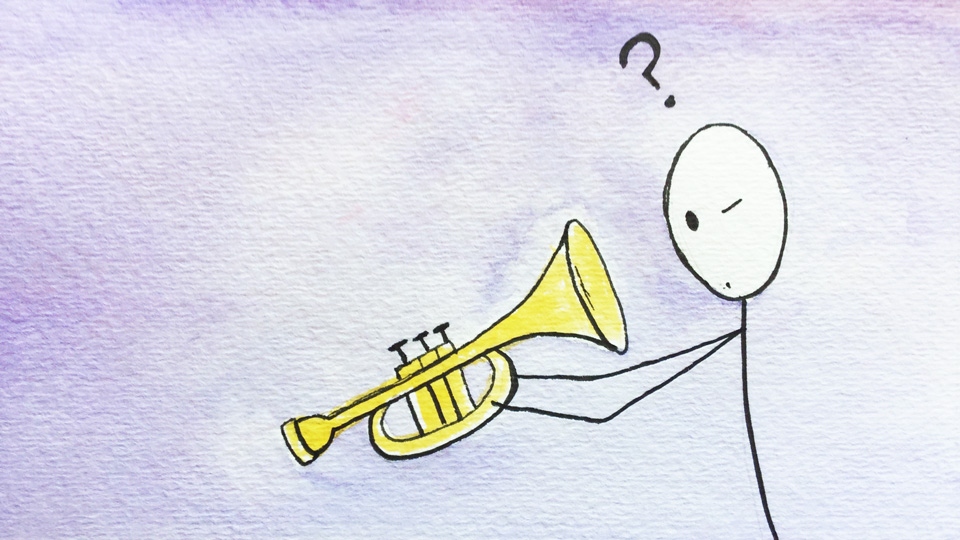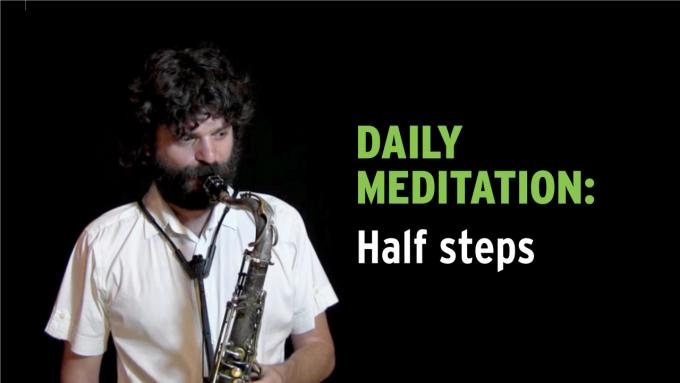David,
Love your approach. In Exercise 1 you describe "...looking down on this musical terrain from above..." Does this mean visualizing fingerings on your horn, notes on a staff, letters on a page or something else?
Rod
David's response:
Hi Rod,
Thanks for the great question. The idea you are asking about is from the Exercise 1 Daily Meditation, where we zoom in and focus very closely on some tiny part of our musical range each day. We start with a single note and gradually expand outward until we reach five notes.
When I talk about looking down on this musical terrain from above, what I mean is that in your mind you are aware of all five notes at once. This means that you can also see the interval relationships between any two notes in this region. So for example if you were on the lowest note of the bunch and suddenly you wanted to jump up a minor third, you would instantly know exactly which note you need to play next. You wouldn't have to do any mental calculations to move up a minor third because you would already know exactly which note is one minor third above the note you're playing.
But how should you picture these notes and interval distances in your mind? Notes on the music staff? Physical movements? Names of the notes? It's really up to your personal preference but here's how it works for most IFR students:
Piano, guitar, bass and strings: These instruments are so visual that you can literally picture harmony directly on the instrument itself. So on these instruments our Exercise 1 practice becomes almost entirely physical. For example when I talk about "looking down on the musical terrain from above", on these instruments you could literally just look at your instrument and see the physical locations of all of the notes we're talking about. The IFR Cloud exercise for guitar is a great example of this.
 Brass and woodwinds: Horn players cannot look at their instruments and see the locations of the musical notes. For example the note C# is not "located" in any particular physical place on a trumpet. So on these instruments, your Exercise 1 practice will almost certainly involve using the names of the notes to help you remember where you are in your musical range. So for you, learning to visualize multiple notes at once means learning to see the consecutive note names in your mind very clearly, but also learning to picture the sequence of physical movements you would make with your hands in order to produce any combination of these notes. One of the ways we learn this is with the IFR Exercise 1 Daily Meditation.
Brass and woodwinds: Horn players cannot look at their instruments and see the locations of the musical notes. For example the note C# is not "located" in any particular physical place on a trumpet. So on these instruments, your Exercise 1 practice will almost certainly involve using the names of the notes to help you remember where you are in your musical range. So for you, learning to visualize multiple notes at once means learning to see the consecutive note names in your mind very clearly, but also learning to picture the sequence of physical movements you would make with your hands in order to produce any combination of these notes. One of the ways we learn this is with the IFR Exercise 1 Daily Meditation.
You already experience this deep level of familiarity in countless other areas of your life. For example if you've ever driven a standard transmission car, you know that over time you become so familiar with the gears that you could easily downshift from fourth gear to second without even having to think about where third gear is. And so we could say that you are able to "look down on all five gears from above" because you are able to simultaneously visualize all five gears, plus you can switch from any one of them to any other. This is exactly the mastery that we want to have with any five consecutive notes of our musical range.
I hope this answers your question. If you have any further doubts, please write more about your experience and we can talk about it more.
Thanks Rod, and happy practicing!
David

